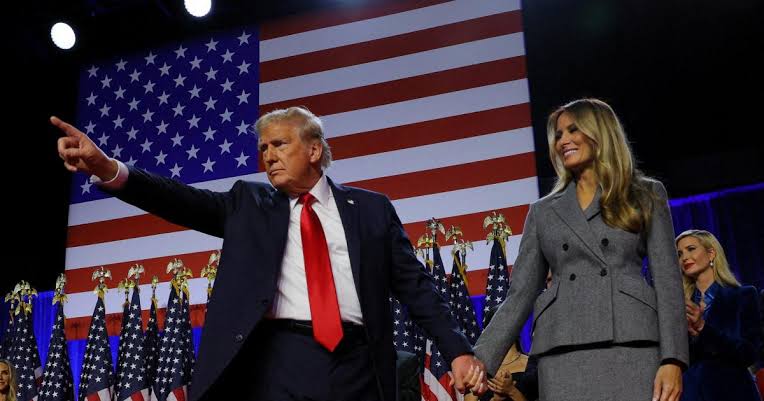Can Trump overcome the deep state in shaping US foreign policy

By Tajul Islam
As the prospect of a second Trump administration looms, debates on the direction of US foreign policy have surged.
Supporters and critics alike wonder how Donald Trump might alter America’s international stance, diverging from the Biden administration’s approach and returning to his “America First” platform.
While Trump’s promises hint at transformative changes, history and institutional dynamics suggest that the broad framework of US foreign policy will likely remain intact, even if some tactical shifts emerge.
When Trump first entered the White House in 2016, he proposed substantial shifts in foreign policy, including the controversial promise to reassess America’s role in NATO, foster a closer relationship with Russia, and aggressively counterbalance China.
The aim was to relieve the US of heavy global commitments and focus on domestic interests.
Yet, despite his sweeping rhetoric, Trump’s actual foreign policy often deviated little from established norms.
For example, Trump’s vision for NATO cantered on reducing American financial burdens. His demands that NATO members increase defence spending led to greater European contributions.
However, this move didn’t dismantle NATO or reduce the US role in global security. Instead, it redistributed responsibilities and arguably strengthened the alliance.
In short, Trump’s policies only nudged NATO towards more equitable financial support rather than dismantling it, underscoring a pragmatic rather than radical approach.
In another example, Trump’s overtures to Russia, including praise for Putin and pursuit of arms control negotiations, initially appeared to signal a reset in US-Russia relations.
Yet, these efforts resulted instead in more sanctions on Russia and increased military aid to Ukraine. Similarly, his “pivot to Asia” and stance on China – marked by trade wars and restrictions on high-tech cooperation – followed the path set by the Obama administration.
This continuity exemplifies how deep-seated US policies often persist, regardless of the president in office.
One of the biggest factors limiting any president’s ability to enact substantial foreign policy change is the bureaucratic and institutional inertia within the US government, often dubbed the “deep state.”
While Trump may control the executive branch, decisions on foreign policy involve Congress, the Department of State, the Department of Defense, and intelligence agencies – each with entrenched priorities.
Congressional approval is essential for treaties, foreign aid, and high-stakes appointments, making it difficult for a president to unilaterally change course on global issues.
This inertia reflects bipartisan consensus in key areas: containing Russia and China, maintaining NATO, and supporting Israel. These issues have a significant following across party lines, reinforcing their persistence in US foreign policy.
A new administration may tweak its tactics but is unlikely to alter the core strategy significantly. Thus, a second Trump term would probably prioritize tactical changes over any comprehensive overhaul, constrained by institutional checks and the complex network of policymakers influencing US foreign relations.
One of Trump’s defining promises has been his pledge to negotiate a swift end to the war in Ukraine, positioning himself as a dealmaker who can succeed where Biden has struggled.
Trump’s approach to Ukraine would likely centre on urging European nations to assume more responsibility for Ukraine’s defence while scaling back US military aid.
His transactional stance might press Ukraine to negotiate peace terms that are more favourable to Russia than the current administration might prefer.
However, this shift, while notable, would still fall within the broader US policy toward Russia and Ukraine: balancing diplomatic engagement with deterrence.
Additionally, US public opinion has shown signs of “Ukraine fatigue,” and polls reflect declining support for continued military aid. Even without a Trump presidency, this trend suggests an inevitable recalibration of US commitment in Ukraine.
If Trump were to follow through on reducing US military aid and increasing diplomatic pressure on Ukraine, the resulting “peace” could impose significant concessions on Kyiv.
Yet, this outcome aligns with the Biden administration’s recent hesitations, reflecting shared bipartisan concerns over the longevity and costs of US involvement in Ukraine.
During his first term, Trump took a confrontational stance on China through tariffs, restrictions, and sanctions, positioning Beijing as a key competitor in trade, technology, and global influence.
This aggressive stance, often touted as a hallmark of his “America First” approach, nevertheless mirrored and expanded upon Obama’s “pivot to Asia.”
A second Trump administration would likely continue this policy trajectory, perhaps with even greater fervor.
However, while Trump’s tone may be more abrasive, a pivot away from China’s containment strategy is unlikely.
The Biden administration has already solidified this containment approach with initiatives like the Indo-Pacific Economic Framework and deepened alliances in Asia, indicating a consensus that sees China as a formidable long-term challenger.
Thus, even if Trump intensifies pressure on China, the strategic direction will remain the same: containment and competition. Key differences may emerge in rhetoric and diplomatic tactics, but Trump’s policy would largely follow the contours of his predecessors’ efforts, illustrating the deep-rooted nature of the US stance toward Beijing.
Another area ripe for tactical adjustments is NATO. Trump’s criticisms of NATO often reflect his belief that the US bears a disproportionate financial burden, and he has consistently urged European allies to increase defense spending.
A second term might see Trump push this agenda harder, perhaps threatening to further limit US contributions if allies don’t step up.
This approach could yield further European involvement in security, shifting some responsibility away from Washington.
However, Trump is unlikely to dismantle NATO altogether, as the alliance is foundational to US and European security interests. Rather, he may pursue a restructuring of NATO’s roles and responsibilities, pushing the alliance toward greater self-sufficiency while maintaining US leadership.
Ultimately, the institutional framework of US foreign policy acts as a powerful moderating force, preventing radical swings regardless of who occupies the White House.
Foreign policy decisions are a product of complex negotiations, long-term strategies, and an interconnected bureaucracy that resists abrupt changes.
These “deep state” dynamics ensure that any president, even one with as bold an agenda as Trump’s, faces constraints when trying to change America’s role on the global stage.
Additionally, the current bipartisan consensus on critical issues – such as countering China, supporting NATO, and limiting Russia’s influence – means that these core policies will persist, with only superficial adjustments to approach and tone.
Trump’s brand of pragmatism might result in more transactional relationships and reduced emphasis on multilateralism, but his administration would still operate within the broad parameters set by decades of US policy.
While Trump’s “America First” platform may alter the US approach to specific issues, the deep-rooted nature of American foreign policy ensures continuity, regardless of administration.
Changes under Trump are likely to be tactical, designed to appease his voter base without straying from the core objectives upheld by bipartisan consensus and bureaucratic inertia.
In sum, the promise of a radically different US foreign policy under Trump faces insurmountable barriers, from institutional inertia to the embedded influence of various interest groups.
His second term, if it materializes, would likely emphasize pragmatism over transformation, maintaining the strategic trajectory established by his predecessors.
As such, the “deep state” remains the invisible hand guiding US foreign policy, ensuring that the structure endures, even as the faces at the top change.




